Grapes, scientifically known as Vitis vinifera, are fascinating fruits that belong to the Vitaceae family. Grape cultivation plays a vital role in the agricultural industry due to its economic significance and nutritional value. It is the practice of growing and nurturing Grapevines to produce high-quality Grapes.
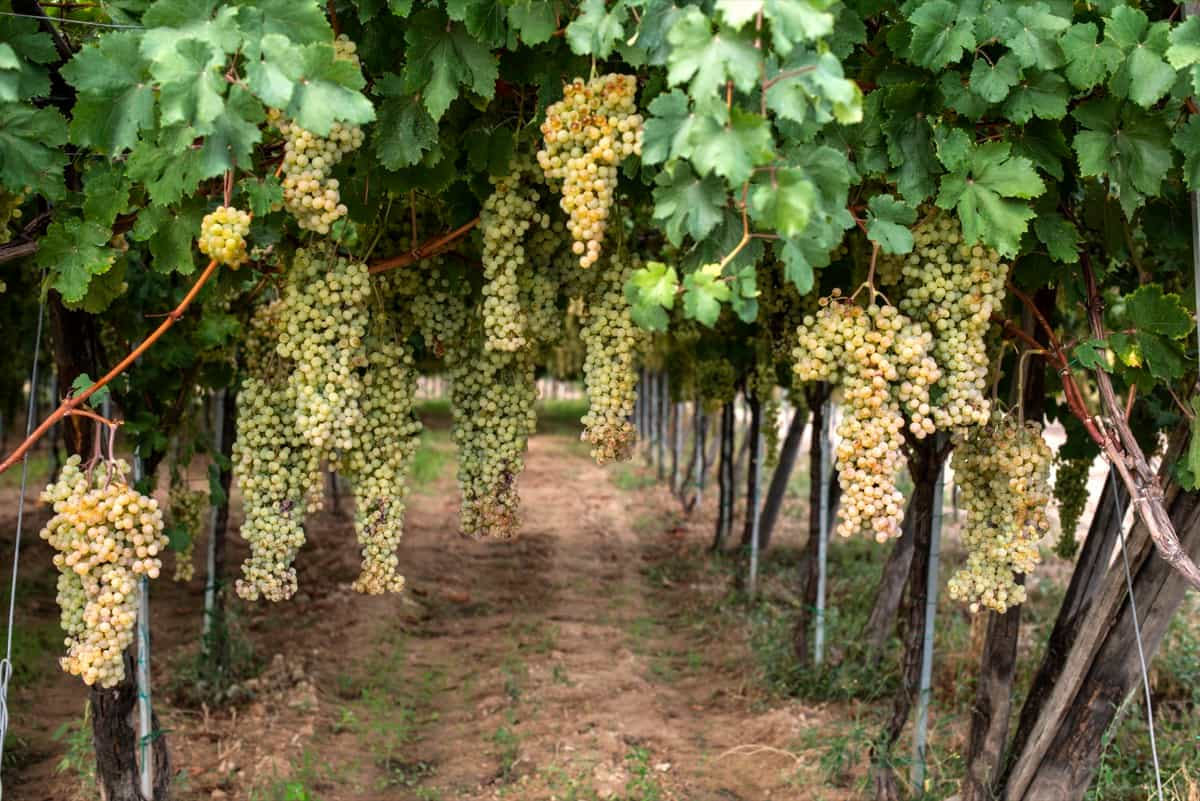
Grape Varieties and Selection
Grapes come in a wide array of varieties, each offering its unique characteristics and flavors. When it comes to selecting the right Grape variety for cultivation, there are several factors to consider. Some popular Grape varieties include Cabernet Sauvignon, Chardonnay, Merlot, Pinot Noir, Riesling, Syrah, Sauvignon Blanc, Zinfandel, Malbec, and Muscat.
Each Grape variety thrives in specific climates and soil conditions. It’s essential to select Grape varieties that are well-suited for your region’s weather patterns and soil type. Consider factors like temperature fluctuations and rainfall levels when making your selection.
Climate and Soil Requirements for Grapes
Grapes are sensitive to their growing conditions, requiring specific climate and soil characteristics to thrive. The ideal climate condition for Grapes is a temperate one, with warm summers and mild winters. Grapes prefer a Mediterranean-like climate with plenty of sunshine to ripen properly. Grapes do best in well-drained soils that are rich in organic matter. Sandy loam or loamy soils are preferred as they provide good drainage while retaining enough moisture for the vines.
pH levels between 6 and 7 are optimal for Grapevine growth, ensuring proper nutrient uptake. Additionally, Grapes need sufficient airflow to prevent diseases like mildew from spreading. Planting in elevated areas or on slopes can help achieve this airflow while also reducing the risk of frost damage during colder months. Selecting the right climate and soil conditions is crucial for successful Grape farming practices.
Site Selection and Land Preparation
The ideal location should have good sunlight exposure, well-drained soil, and protection from strong winds. Before planting, ensure the soil is tested for pH levels and nutrient content to make necessary adjustments. Clearing the land of any debris or weeds is essential before cultivation begins.
In case you missed it: Grapes Training Systems and Methods: A Comparative Analysis
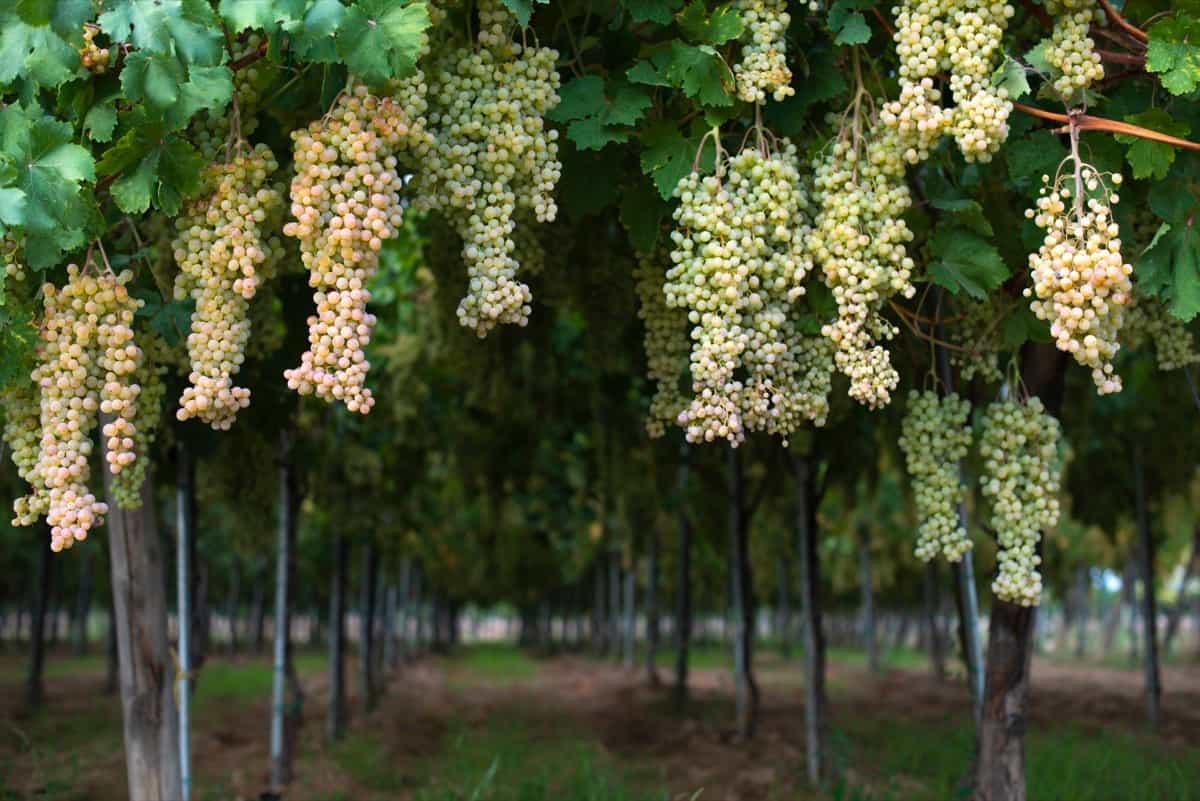
Properly tilling the soil helps improve aeration and drainage, creating an optimal environment for Grapevines to thrive. Additionally, installing trellises or support structures early on can aid in vine growth and management as they mature. Grapes thrive in warm temperate climates with well-drained soils, making it essential to choose a suitable location for your vineyard.
Grapevine Propagation Techniques
Grapevine propagation techniques are essential for expanding your Grape orchard. One common method is using cuttings from healthy vines to grow new plants. These cuttings need to be taken during the dormant season and planted in well-prepared soil. Another technique is grafting, where a cutting with desirable traits is joined onto a rootstock. This method helps control diseases and pests while promoting vigorous growth.
Layering involves bending a low-hanging vine stem into the ground, allowing it to develop roots before being severed from the parent plant. This technique is useful for hard-to-root varieties. Tissue culture propagation is a modern method that involves growing plants from individual cells in a laboratory setting. It allows for the mass production of disease-free Grapevines.
Planting and Trellising Systems
Proper spacing between Grapevines is essential to ensure adequate sunlight exposure and airflow, which are vital for healthy growth and optimal fruit production. Choosing the right trellis system is key to supporting the weight of Grape clusters as they mature. Common trellising methods include Vertical Shoot Positioning (VSP), High Wire Cordon, Geneva Double Curtain, and Scott Henry.
Each system has its advantages and is tailored to different growing conditions and Grape varieties. Factors such as climate, soil type, vine vigor, and desired canopy density should all be taken into consideration when selecting a trellising method for your vineyard. Proper installation of trellis posts, wires, and end assemblies is essential to ensure stability and longevity. Regular maintenance throughout the growing season will help support the vines as they develop and bear fruit.
Water Management in Grape Cultivation
Water management is crucial in Grape cultivation to ensure the plants receive adequate hydration throughout their growth cycle. Grapes require a consistent water supply, especially during flowering and fruit development stages. Proper irrigation techniques like drip or sprinkler systems help prevent water stress and promote healthy vine growth. It’s essential to monitor soil moisture levels regularly to avoid overwatering or underwatering.
In case you missed it: Top 20 Grape Varieties to Grow in India: List of Grape Varieties to Grow for High Profits
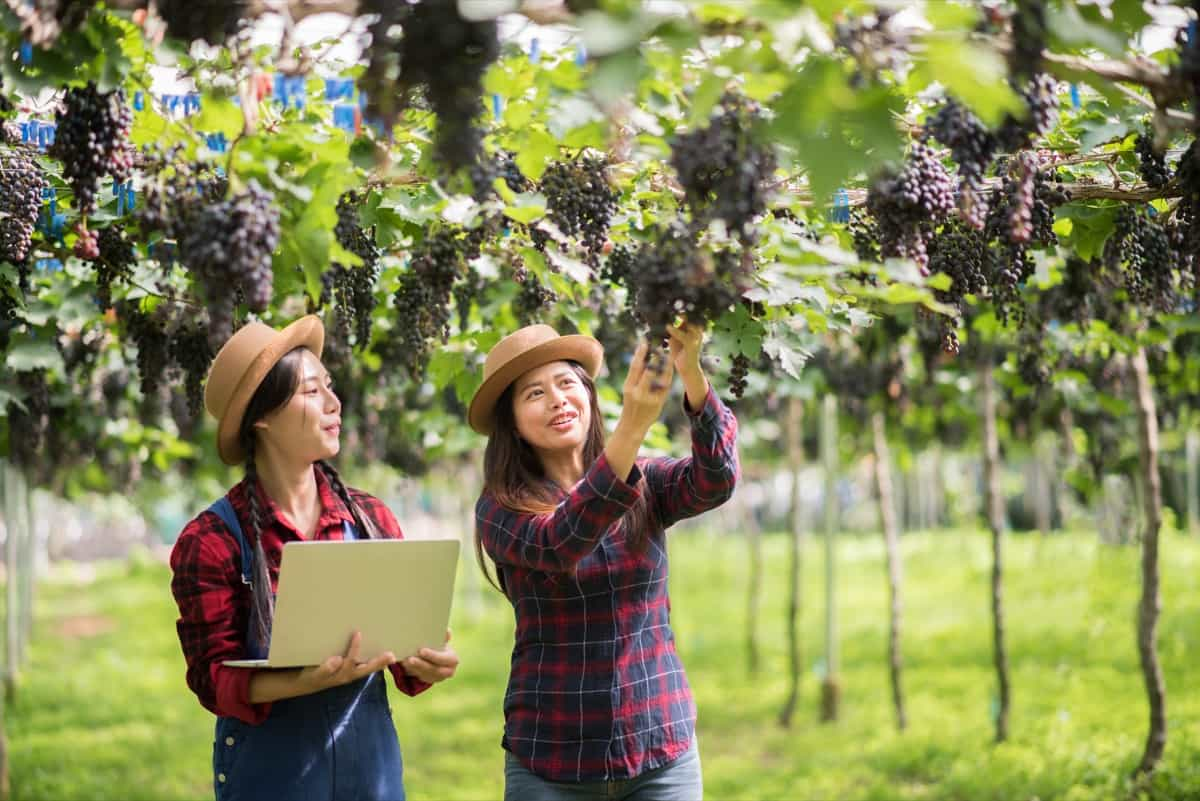
Overly wet growing conditions can lead to root rot, while drought stress can affect fruit quality and yield. Implementing mulching around Grapevines helps retain soil moisture and reduces evaporation rates. Timing of watering is key; it’s best to irrigate early in the morning or late in the evening to minimize water loss by evaporation. Additionally, adjusting watering schedules based on weather conditions can optimize water usage efficiency in Grape farming practices.
Fertilization Strategies
Fertilization plays a crucial role in Grape cultivation, ensuring the vines receive essential nutrients for healthy growth and high yields. Before applying fertilizers, it’s vital to conduct soil tests to find the specific nutrient requirements of the vineyard. Based on the soil test results, a tailored fertilization plan can be developed to address any deficiencies and optimize nutrient uptake.
Organic fertilizers like compost and manure are great options for improving soil structure and fertility while providing slow-release nutrients to the Grapevines. Inorganic fertilizers can also be used strategically to supplement specific nutrients lacking in the soil. Nitrogen, phosphorus, potassium, and micronutrients are key elements that should be included in the fertilizer regimen based on plant needs at different growth stages.
Proper timing of fertilizer applications is essential to ensure optimal absorption by the plants without causing nutrient imbalances or leaching. By following a well-planned fertilization strategy, Grape growers can promote robust vine growth, improve fruit quality, and ultimately enhance their yield potential.
Integrated Pest Management for Grapes
Some of the most common pests in Grapes include the infamous Grapevine moth, which lays its eggs on Grape clusters, leading to damaged fruit and reduced yields. Another pesky critter to watch out for is the Grape leafhopper. Integrated Pest Management (IPM) is a crucial aspect of Grape farming, as it focuses on sustainable methods to control harmful pests without relying solely on chemical pesticides. By combining biological, cultural, and physical controls with minimal pesticide use when necessary,
Grape growers can effectively manage pest populations while minimizing environmental impact. The effective IPM strategy for Grapes is using natural predators to control common pests such as aphids and mites. Additionally, planting cover crops can attract beneficial insects that prey on harmful pests, creating a balanced ecosystem in the vineyard. Regular monitoring of Grapevines for signs of pest infestations is key to early detection and intervention.
In case you missed it: Grape Vine Pruning, Defoliation, and Thinning for Great Yield
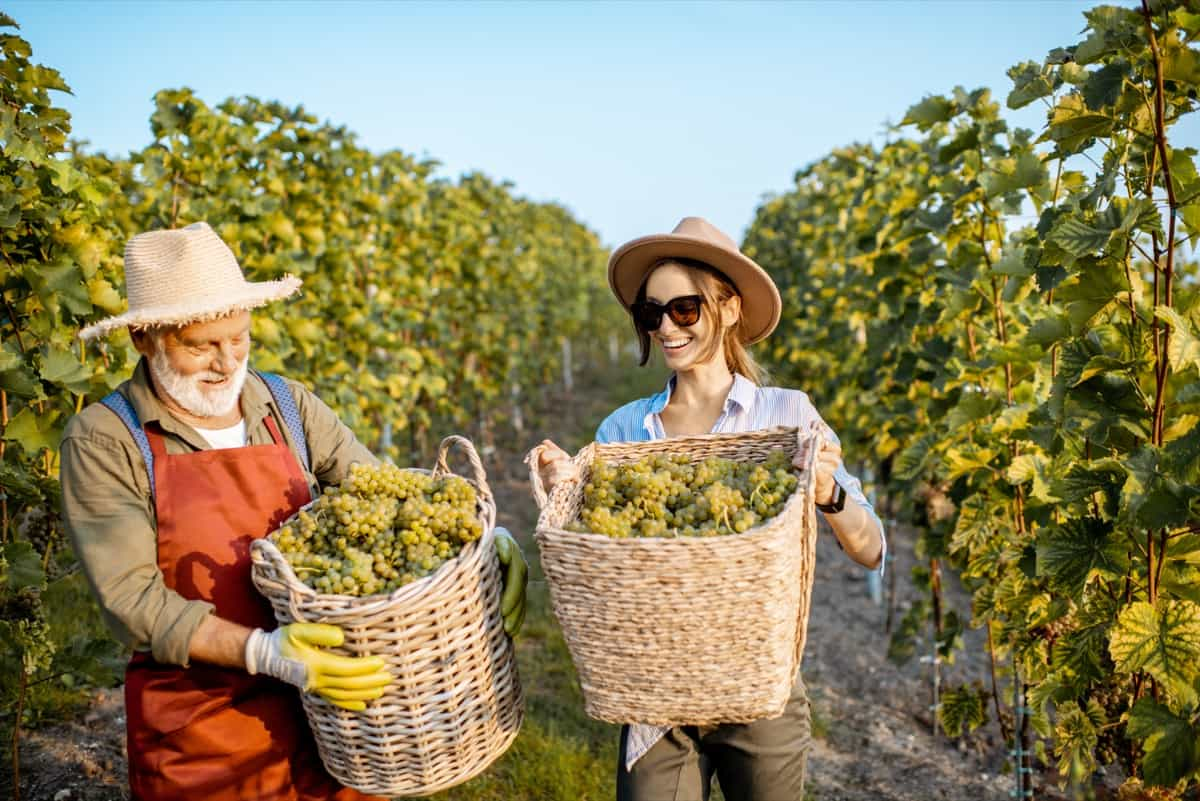
This allows growers to take timely action through targeted treatments like pheromone traps or organic sprays derived from plant extracts. Implementing good cultural practices, such as proper pruning techniques and maintaining healthy soil conditions, also plays a significant role in preventing pest outbreaks. By promoting overall vine health, Grape farmers can reduce the susceptibility of their crops to diseases and pests naturally.
Disease Control in Grape Farming
Disease control is a crucial aspect of Grape farming to ensure healthy vineyards and high yields. Various fungal, bacterial, and viral diseases can affect Grapevines, leading to reduced productivity and quality. Preventive measures such as proper sanitation, planting disease-resistant varieties, and monitoring for early signs of disease are essential in managing Grapevine pathogens.
Regular scouting of the vineyard for symptoms like leaf discoloration, powdery mildew, downy mildew, or black rot can help detect disease early and intervene timely. Cultural practices like pruning to improve airflow and sunlight penetration can also reduce the risk of disease development. Additionally, using organic fungicides or biocontrol agents selectively can help combat diseases sustainably without harming beneficial organisms.
Pruning and Training of Grapevines
Proper pruning helps to maintain the vine’s health and ensure optimal fruit production. When it comes to training, selecting the right system will support the vines as they grow, making harvesting easier. Regular plant pruning encourages new growth and improves air circulation within the canopy, reducing disease risks. It also helps balance vegetative growth with fruit production.
Training systems like pergolas or vertical trellises provide support for the vines to climb and receive maximum sunlight exposure. Timing is important to pruning – typically done during dormancy in late winter or early spring. Each variety may require specific pruning techniques based on its growth habits and desired yield.
Growth Regulators and Their Use in Grape Production
Growth regulators play a crucial role in Grape production, helping to manage vine growth and fruit development effectively. By using these regulators strategically, farmers can enhance the quality and yield of their Grape harvests. One common growth regulator used in Grape farming is gibberellic acid, which promotes shoot elongation and can help improve fruit set. Another essential growth regulator is abscisic acid, which aids in regulating dormancy and stress responses in Grapevines.
Ethylene is also utilized to control ripening processes and ensure uniform maturation of Grapes across the vineyard. These regulators are applied at specific stages of plant growth to achieve desired outcomes without negatively impacting the vines’ health or productivity. When used correctly, growth regulators serve as valuable tools for Grape growers looking to optimize their cultivation practices.
Harvesting Techniques and Timing for Grapes
Grapes should be harvested when they reach optimal ripeness, which varies depending on the Grape variety and intended use. For table Grapes, harvesting usually takes place when they are at their peak sweetness and flavor. This is determined by taste-testing a few Grapes from different parts of the vineyard. For wine production, Grapes are typically harvested based on sugar levels measured through a refractometer.
In case you missed it: How this Farmer Making 60 Lakhs from 6 Acres Organic Grape Farm: Organic Grape Cultivation Sucess Story in India

Harvesting can be done manually or mechanically. Handpicking ensures delicate handling of the fruit, while machines offer efficiency for larger vineyards. Whichever method you choose, gentle handling is crucial to preserve Grape quality. Factors like weather conditions and Grape maturity need to be considered to ensure an optimal harvest time for maximum flavor development and sugar content in the Grapes.
Expected Yield in Grape Orchard
The expected yield in a Grape orchard can vary greatly depending on how well the vines are cared for throughout the growing season. Proper pruning and training methods play a significant role in maximizing yields. On average, a well-maintained Grape vineyard can produce 5 to 15 tons of Grapes per acre. However, with proper care and attention to detail, some vineyards have been known to exceed these numbers significantly.
Yield Boosting Techniques
Proper canopy management is crucial for enhancing sunlight exposure and optimizing photosynthesis. By ensuring adequate spacing between vines and training them efficiently on trellises, you can improve air circulation and minimize disease risks. Implementing strategic pruning practices tailored to your specific Grape variety can stimulate plant growth and increase fruit production. Regularly thinning out excess shoots and clusters will redirect the plant’s energy towards developing high-quality Grapes.
Furthermore, employing precision irrigation methods such as drip systems can enhance water efficiency and provide consistent moisture levels essential for healthy vine growth. Monitoring soil moisture regularly allows you to adjust watering schedules accordingly. Additionally, utilizing organic fertilizers rich in nutrients like nitrogen, phosphorus, and potassium promotes strong root development and overall plant vigor. Supplementing with micronutrients as needed ensures balanced nutrition for optimal Grape yield potential.
Organic Grape Farming Practices
Organic Grape farming practices can help you grow delicious and healthy Grapes while minimizing the use of synthetic chemicals. One essential technique is to focus on soil health by using compost and natural fertilizers to nourish the Grapevines. This promotes a balanced ecosystem in your vineyard, enhancing Grape quality.
In case you missed it: How to Control Pests and Diseases in Grapes: Causes, Symptoms, Chemical, and Biological Management
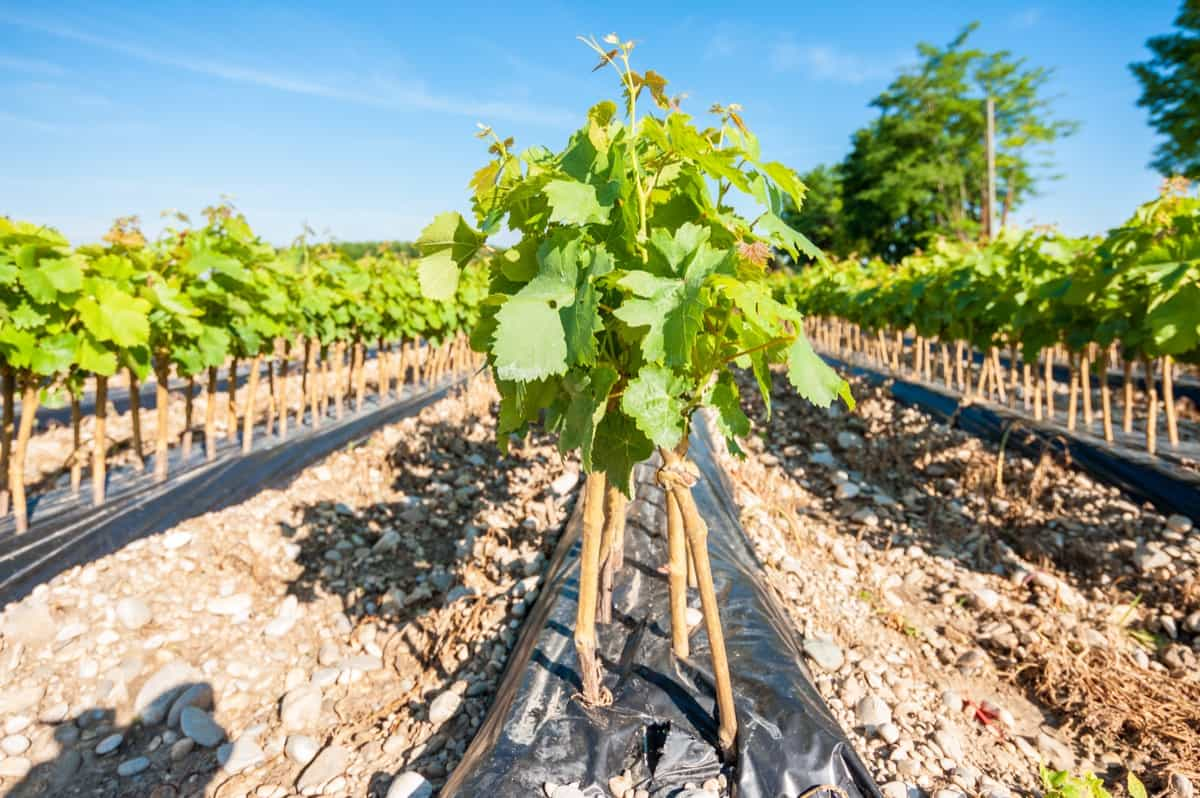
Another key aspect of organic Grape farming is implementing integrated pest management strategies. This involves using beneficial insects, such as ladybugs and lacewings, to control pests naturally without relying on pesticides. Additionally, practicing proper canopy management by pruning and training vines helps improve air circulation and sunlight exposure for optimal Grape growth.
Grape cultivation involves a series of techniques and methods aimed at maximizing yield and ensuring the health of the vines. From selecting the right Grape varieties to preparing the soil, every step in Grape cultivation plays a major role in the success of the vineyard.
- How to Make Houseplants Bushy: Effective Tips and Ideas
- Innovative Strategies for Boosting Coconut Pollination and Yield
- Pollination Strategies for Maximum Pumpkin Yield
- The Complete Guide to Chicken Fattening: Strategies for Maximum Growth
- Natural Solutions for Tulip Problems: 100% Effective Remedies for Leaf and Bulb-Related Issues
- Revolutionizing Citrus Preservation: Towards a Healthier, Greener Future
- Natural Solutions for Peony Leaf and Flower Problems: 100% Effective Remedies
- Maximizing Profits with Avocado Contract Farming in India: A Comprehensive Guide
- Natural Solutions for Hydrangea Problems: 100% Effective Remedies for Leaf and Flowers
- The Ultimate Guide to Choosing the Perfect Foliage Friend: Bringing Life Indoors
- From Sunlight to Sustainability: 15 Ways to Use Solar Technology in Agriculture
- The Ultimate Guide to Dong Tao Chicken: Exploring from History to Raising
- The Eco-Friendly Makeover: How to Convert Your Unused Swimming Pool into a Fish Pond
- Mastering the Art of Delaware Chicken Farming: Essentials for Healthy Backyard Flocks
- 20 Best Homemade Fertilizers for Money Plant: DIY Recipes and Application Methods
- How to Craft a Comprehensive Free-Range Chicken Farming Business Plan
- Brighten Your Flock: Raising Easter Egger Chickens for Beauty and Bounty
- How to Optimize Your Poultry Egg Farm Business Plan with These Strategies
- Subsidy for Spirulina Cultivation: How Indian Government Schemes Encouraging Spirulina Farmers
- Ultimate Guide to Raising Dominique Chickens: Breeding, Feeding, Egg-Production, and Care
- Mastering the Art of Raising Jersey Giant Chickens: Care, Feeding, and More
- Ultimate Guide to Raising Legbar Chickens: Breeding, Farming Practices, Diet, Egg-Production
- How to Raise Welsummer Chickens: A Comprehensive Guide for Beginners
- How to Protect Indoor Plants in Winter: A Comprehensive Guide
- Ultimate Guide to Grow Bag Gardening: Tips, Tricks, and Planting Ideas for Urban Gardeners
- Guide to Lotus Cultivation: How to Propagate, Plant, Grow, Care, Cost, and Profit
- Agriculture Drone Subsidy Scheme: Government Kisan Subsidy, License, and How to Apply Online
- Ultimate Guide to Raising Araucana Chickens: Breed Profile, Farming Economics, Diet, and Care
- Bringing Hydroponics to Classroom: Importance, Benefits of Learning for School Students
- Ultimate Guide to Raising Polish Chickens: Breed Profile, Farming Economics, Diet, and Care
- Ultimate Guide to Raising Australorp Chickens: Profile, Farming Economics, Egg Production, Diet, and Care
- Silkie Chicken Farming: Raising Practices, Varieties, Egg Production, Diet, and Care
- Sussex Chicken Farming: Raising Practices, Varieties, Egg Production, Diet and Care
- Homemade Feed Formulations for Livestock: Discover Cost-effective Starter to Finisher Feed Recipes
- 20 Best Pig Weight Gain Supplements: Top Swine Weight Gain Formulas
- Ultimate Guide to Elderberry Farming: Propagation, Planting, Yield, Cost, and Profit
I am interested to set up grapes farming in Nashik. Require detail Project report including its costing, profit etc.
We will update soon about Grape Farming Project Report. Stay tune!.
Hi, We will update Grape Farming Project Report soon.
Dear,
I want to cultivate fruits in my farm,
So as for plants availability kindly provide prices & a lists of plants.
Regarding,
Dvija Farm.
Gopal.
Hi J. REDDY
I am planning for grape cultivation mainly for resin production under organic condition in an area of about 10 acres. I am from Vijayapura district, Karnataka. Kindly provide me the detailed project on grape cultivation with respect to cost & returns on resin production, funding sources, government schemes.
Namaskar,
We are not using chemical [Fertilizers / pesticides] in our farm.
Which are the recommended ORGANIC pesticides for GRAPES .
Please advise.
Best wishes
Ashok
I need grapes seeds
Please guide me to get grape seeds I dnt know where to get seeds and had not much ideas on grape farming….so your little contribution is appreciated